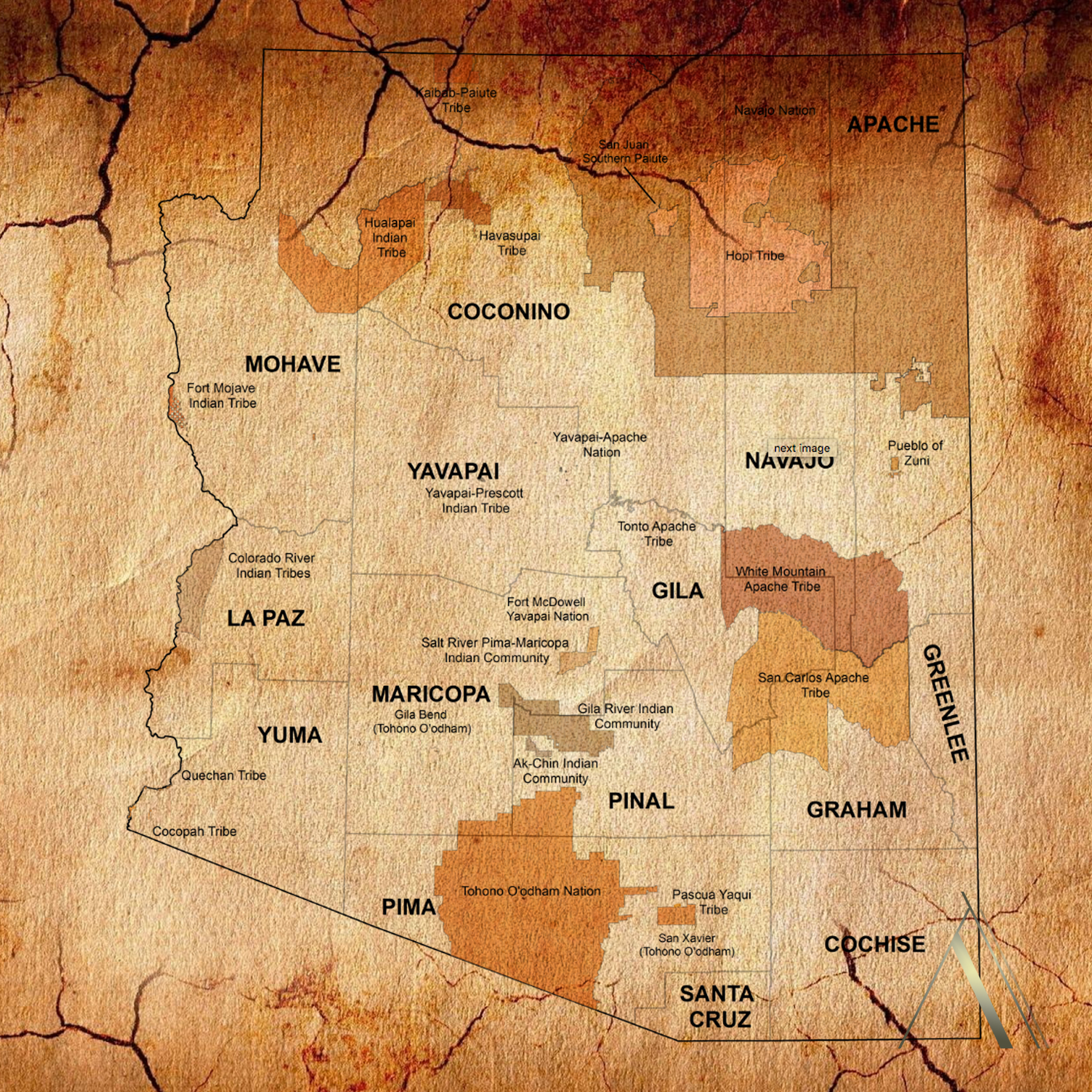Arizona’s Native Tapestry: Exploring the Rich Diversity of Its Tribes
Arizona’s Native Tapestry: Exploring the Rich Diversity of Its Tribes

Arizona, the land of towering red rocks and endless desert skies, is also a place deeply woven with the history and culture of its Native American tribes. For centuries, these tribes have called this land home, shaping its landscape, traditions, and spirit. While Arizona boasts 22 federally recognized tribes, each with its own unique story, this article will delve into the stories of some of the most prominent and influential tribes, shedding light on their rich heritage, vibrant culture, and ongoing contributions to Arizona’s vibrant tapestry.
A Journey Through Time: From Ancient Ancestors to Modern Resilience
Related Articles: Arizona’s Native Tapestry: Exploring the Rich Diversity of Its Tribes
- Chasing The Ghost Of The Plains: A Pronghorn Hunt On The Crow Reservation
- Discover the Hidden Histories of Native American Tribes
- Unveiling the Native Heritage: Discover the Vibrant Indian Tribes of Oklahoma City
- Unveiling New Mexico's Native American Reservations: Discover Hidden Gems and Indigenous Cultures
- Costa Rica’s Hidden Treasures: Exploring The Rich Tapestry Of Indigenous Cultures
Long before the arrival of European settlers, Arizona’s landscape was already teeming with life. The ancestors of today’s tribes, skilled hunters, gatherers, and farmers, carved out a life in harmony with the desert environment. They developed intricate social structures, spiritual beliefs, and artistic traditions that continue to inspire and amaze us today.
The Navajo Nation: Keepers of the Land
The Navajo Nation, the largest Native American reservation in the United States, occupies a vast expanse of northern Arizona. The Navajo people, known for their intricate weaving, silverwork, and storytelling, are deeply connected to the land. Their traditional way of life, centered around respect for nature and community, has helped them weather the storms of history, including forced relocation and assimilation attempts. Today, the Navajo Nation continues to thrive, preserving its cultural heritage while striving for economic self-sufficiency and political sovereignty.
The Hopi: Guardians of the Ancient Ones
Nestled within the Navajo Nation, the Hopi people have lived in their ancestral villages for centuries. Known for their distinctive adobe architecture, intricate kachina dolls, and vibrant ceremonies, the Hopi have long been guardians of their unique cultural identity. Their connection to the land and their ancestors is profound, reflected in their commitment to preserving ancient traditions and rituals. The Hopi believe they are entrusted with the sacred duty of maintaining harmony between the human and spiritual worlds, a belief that guides their daily lives.
The Apache: Warriors of the Southwest
The Apache people, a diverse group of tribes with a shared history and cultural heritage, once roamed vast territories across Arizona and the Southwest. Known for their fierce independence and unmatched equestrian skills, the Apache fought bravely to defend their land and way of life against encroaching settlers. The Apache story is one of resilience, adaptability, and unwavering determination to preserve their cultural traditions. Today, Apache tribes continue to play a vital role in protecting their ancestral lands, advocating for their rights, and sharing their rich cultural heritage with the world.
The Yavapai-Apache: Guardians of the Mountains

The Yavapai-Apache, a tribe residing in central Arizona, are known for their deep connection to the rugged mountains and canyons that define their ancestral territory. Their name, meaning "people of the place where the sun shines," reflects their reverence for the natural world and their belief in the interconnectedness of all living things. The Yavapai-Apache have long been known for their artistic talents, particularly their beadwork and basketry. Today, they are actively engaged in preserving their cultural heritage, promoting economic development, and advocating for environmental protection.
The Tohono O’odham: Keepers of the Desert
The Tohono O’odham, whose name means "desert people," are the largest tribe in Arizona and have lived in the Sonoran Desert for centuries. They are renowned for their traditional agriculture, particularly their cultivation of the saguaro cactus fruit, and their intricate basketry. The Tohono O’odham have a strong connection to their ancestral lands and traditions, which they strive to preserve for future generations. Their story is a testament to the resilience of the human spirit and the enduring power of cultural traditions.
Beyond the Tribes: A Shared Heritage
While each tribe possesses its unique traditions and stories, they share a common bond as indigenous peoples of Arizona. They have faced similar challenges, including colonization, forced assimilation, and the loss of their ancestral lands. Yet, they have also shared a spirit of resilience, adaptation, and cultural preservation. Today, Arizona’s Native American tribes are actively engaged in promoting their cultural heritage, advocating for their rights, and contributing to the economic and social well-being of the state.

The Future of Arizona’s Native Heritage
The future of Arizona’s Native tribes is bright, filled with opportunities and challenges. They are actively working to preserve their cultural heritage, promote economic development, and advocate for their rights. Their stories, rich in tradition, resilience, and hope, continue to inspire and teach us about the importance of respecting our past, embracing diversity, and striving for a future where all communities thrive.
FAQ: Arizona’s Native Tribes
Q: How many Native American tribes are there in Arizona?
A: There are 22 federally recognized tribes in Arizona, each with its own unique history, culture, and language.

Q: What are some of the most prominent tribes in Arizona?
A: Some of the most prominent tribes in Arizona include the Navajo Nation, the Hopi, the Apache, the Yavapai-Apache, and the Tohono O’odham.
Q: What are some of the challenges facing Arizona’s Native tribes today?
A: Arizona’s Native tribes face a number of challenges, including poverty, lack of access to healthcare, and environmental degradation. They also continue to grapple with the legacy of colonization and forced assimilation.
Q: What are some of the ways in which Arizona’s Native tribes are working to preserve their cultural heritage?
A: Arizona’s Native tribes are actively working to preserve their cultural heritage through language revitalization programs, traditional arts and crafts workshops, and cultural festivals.
Q: What are some of the contributions that Arizona’s Native tribes have made to the state’s culture and economy?
A: Arizona’s Native tribes have made significant contributions to the state’s culture and economy through their art, music, dance, and tourism. They also play a vital role in the state’s agricultural and environmental industries.
Q: How can I learn more about Arizona’s Native tribes?
A: There are many ways to learn more about Arizona’s Native tribes. You can visit tribal museums and cultural centers, attend powwows and festivals, or read books and articles about their history and culture. You can also support Native-owned businesses and organizations.
Beyond the Page: Engaging with Arizona’s Native Heritage
Learning about Arizona’s Native tribes is not just about reading about their history and culture. It’s about engaging with their vibrant communities, appreciating their artistic expressions, and respecting their traditions. It’s about recognizing their ongoing contributions to the state and celebrating their resilience and spirit. By taking the time to learn about and connect with Arizona’s Native tribes, we can all play a role in honoring their rich heritage and ensuring their future prosperity.

Closure
Thus, we hope this article has provided valuable insights into Arizona’s Native Tapestry: Exploring the Rich Diversity of Its Tribes. We appreciate your attention to our article. See you in our next article!

